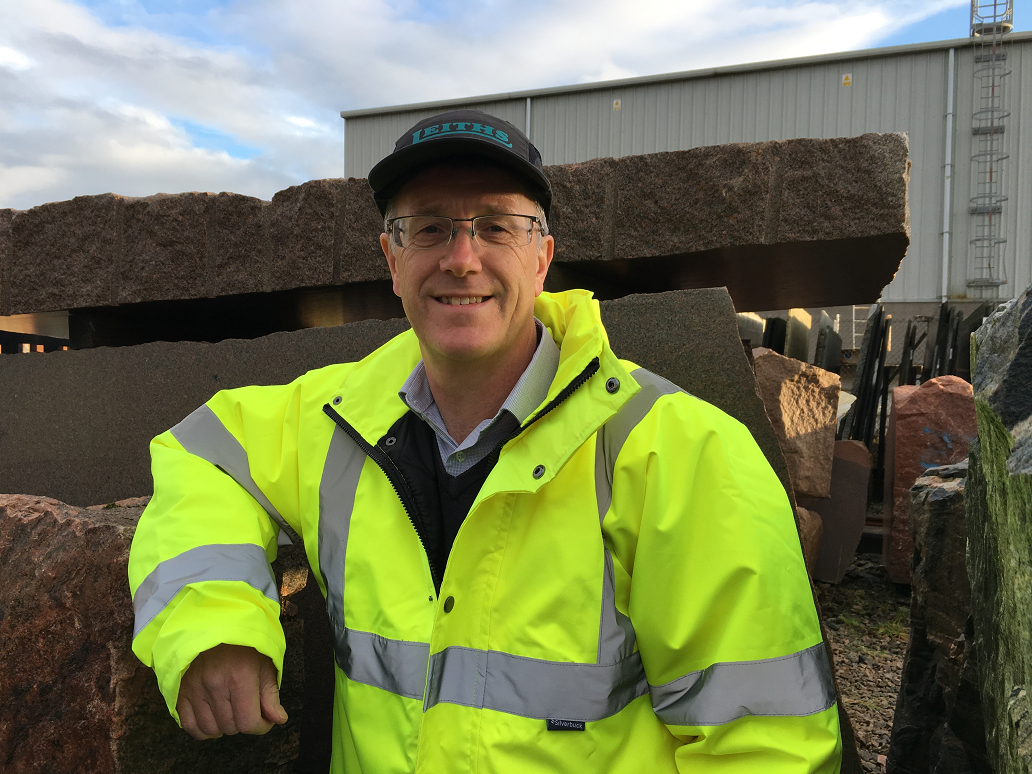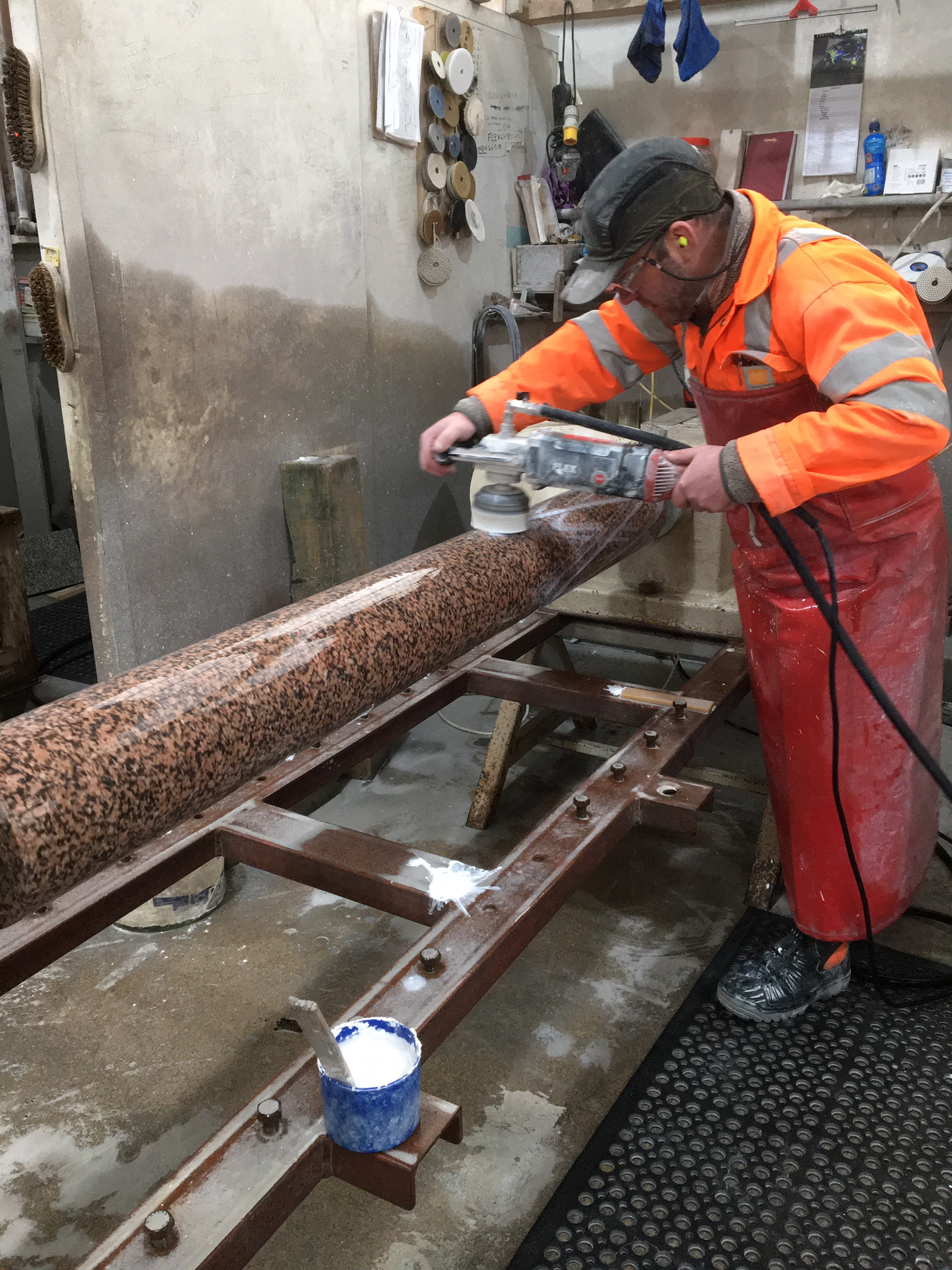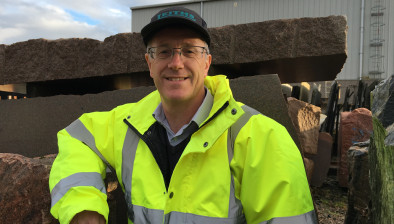And finally… Peterhead granite used to restore historic New York building
Three ornamental pillars crafted from Peterhead granite are making their way across the Atlantic for use in the restoration of a historic New York building after some detective work by Scottish stonemasons.

Richard Collinson, commercial manager for Fyfe Glenrock
Natural stone specialists Fyfe Glenrock were able to identify the type of granite required for the multi-million-dollar restoration of the Big Apple’s oldest apartment block from a photograph of the existing columns.
The Oldmeldrum-based firm was contacted by counterparts in the States seeking a perfect match for three polished granite pillars at The Windermere, on the city’s upmarket Upper West Side.
Original shipping and building records suggested that the stone for the pillars had been imported from Scotland, prompting Swenson Stone Consultants in New Hampshire to contact a firm with a worldwide reputation for granite quarrying and craftsmanship.
Fyfe Glenrock commercial manager Richard Collinson said: “We have worked with this firm in the past so they were aware of our knowledge of Scottish granites and they emailed asking for confirmation of the identity of the granite used on the building which they believed to be from Aberdeenshire.
“The photo they sent had sufficient detail for us to know that the pillars had been created from Peterhead granite. It’s always very interesting when we get an unusual request like this, and we’re delighted to be able to help restore a building of such significant historical interest.”
The Windermere was originally completed in around 1881 as a complex of three seven-storey red brick buildings. With his own daughters in mind, Superintendent Henry Sterling Goodale marketed the apartments as homes for “the new woman” – a growing class of single and financially independent ladies – and were among the first in the city to offer amenities such as hydraulic elevators and telephones.
Many decades later they were converted into single-occupancy residences and were marketed to New Yorkers struggling with sky-high rents, particularly the city’s growing creative community. One of The Windermere’s most famous past residents is actor Steve McQueen.
The building slowly fell into a state of decline and in 2007 was declared unsafe by the fire department. Two years later it was bought by a developer and the major refurbishment will see the building reopen its doors as a plush hotel, with retail space and a number of private apartments.
Peterhead granite was used extensively throughout the UK and abroad during the 19th century and comes in red and blue varieties. The red variety is often used for ornamental construction – it’s found in many buildings in London, Liverpool and Cambridge – while the blue variety is used for decorative proposes, including the fountains in Trafalgar Square in London.
It is still quarried at Stirlinghill and Longhaven quarries, but these days it is mostly crushed for aggregate.
The pillars have been produced, polished and finished at Fyfe Glenrock’s base in Aberdeenshire and are now being shipped to the USA where, said Mr Collinson, they will not look out of place.

He visited New York three years ago and was struck by the amount of Peterhead granite used in building and memorial bases. “If you look at the history books, a lot of masons from the north east of Scotland migrated to and from America in the late 1800s,” he said.
“Due to the fact that they had a knowledge of indigenous Scottish granite and its properties, it is understandable that they would seek out Scottish materials to use there. So, it wasn’t only the men, but the materials, that made the transatlantic journey.
“We’re talking about 120 years ago when stonemasonry would still have been a relatively young industry in the new world, and there would have been plenty of work opportunities.
“There is some evidence to suggest that the parapet bases of the Brooklyn Bridge were made by Aberdeen masons so, given the fact that Peterhead granite was used at The Windermere, it’s likely that Scottish masons were involved in construction.”
Fyfe Glenrock has more than 160 years’ experience in granite quarrying and craftmanship, and has supplied materials for many high-profile works, both at home and overseas.
It has provided indigenous Scottish granite for projects including The Scottish Parliament, the Millicent Fawcett Suffragist Memorial in Parliament Square, London and more recently The Silver Fin Building, Union Street, Aberdeen.
Fyfe Glenrock also supplies stonework and streetscape materials for many prestigious infrastructure developments across the UK in addition to materials for landscaping and building works, memorials and interiors.




















